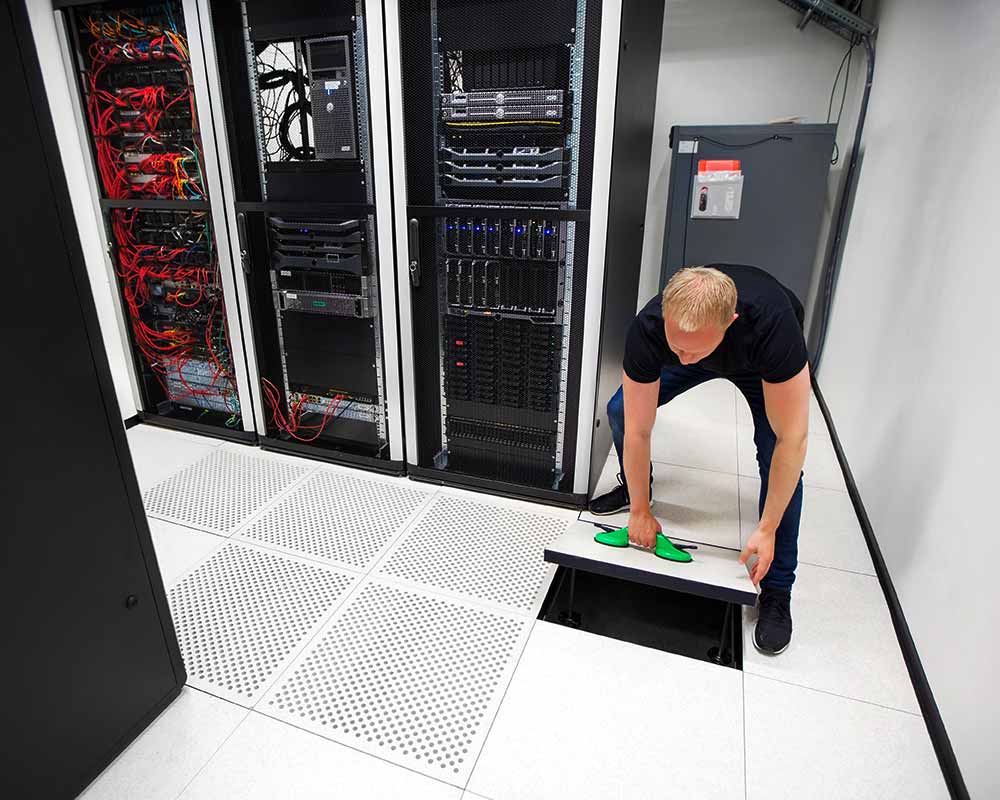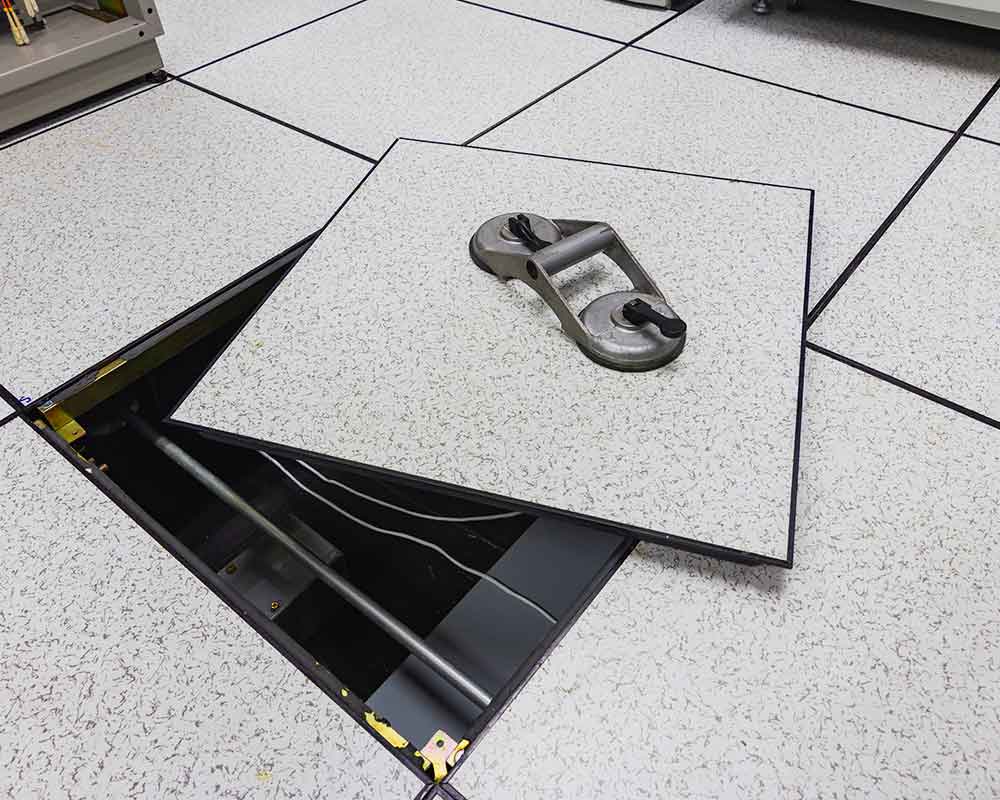Raised Floor Regulators Achieve Equitable Air Distribution
Why don’t you simply put your servers and heavy IT and hardware devices on the floor? Regular RC floors have no cooling functions. A subfloor transfers cold air through conditioning channels to manage the temperature of installations, wires, and other components. In addition to low-profile raised floors, iNetwork Solutions provides traditional ones with perforated panels supported on steel pedestals. An efficient raised floor works as a cold aisle, which reduces significantly the power cooling systems consume. Below the raised floor we provide there are air supply regulators that ideally manage flows in cold aisles. This develops the balance that the data center needs to establish a suitable temperature and humidity environment. To keep hardware cool and avoid the issues associated with overheating, data center-raised floors have the capacity to withstand larger heat densities.



Control Your Data Center’s Setup and Cooling as You Need
Data center raised floors provide modular designs whose tiles can be easily added, removed, or rearranged. On moving servers, tiles adapt to the new cool airflow path. If your data center needed more fans, copper or fiber cabling can be stored under the floor and fans can be installed overhead.Scalable
Whenever you need to add more servers in the future, adding more cooling channels becomes easier. More perforated tiles of raised floor can be added. Without having to construct a new cooling infrastructure, this improves airflow and handles higher heat densities.
Flexible
Moving servers and maintaining them becomes simpler with a data center raised floor. No need for ladders or other instruments to access servers. You can easily unplug servers or terminate cables whenever you need to. Raised floors also provide flexibility in materials.
Cost-Effective
As raised floors conserve energy, so you can add more servers without expanding your cooling system units. They also use a minimal number of fans and other HVAC equipment. A data center doesn't need new walls, rooms, or structures to accommodate cooling equipment.